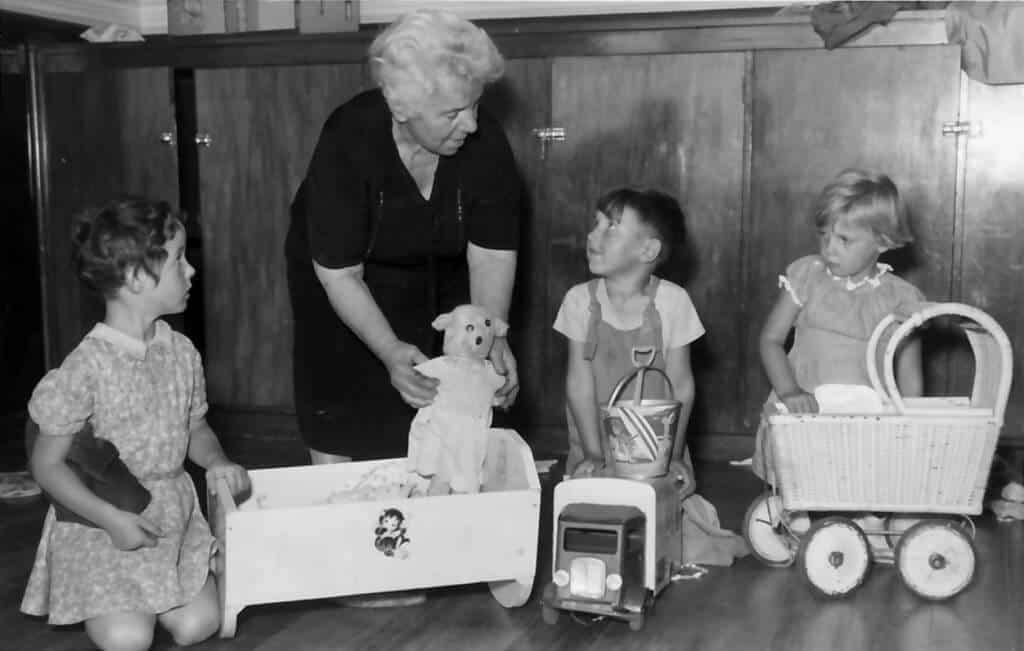Former children from St Hilda’s and Abbotsford Homes will be special guests at the weekend’s (Saturday, 4 May) opening of an exhibition at the Central Hawke’s Bay Settlers Museum in Waipawa.
The exhibition St Hilda’s and Abbotsford: Our Children’s Homes has grown out of a book researched and written by Dr Kay Morris Matthews, an internationally recognised academic historian and a research professor at EIT.
The book, Who Cared? Childhoods within Hawke’s Bay Children’s Homes and Orphanages 1892-1988, is a snapshot of the experiences of thousands of youngsters – orphaned, illegitimate, abandoned or destitute – who lived part or all of their childhoods in eight homes that operated in the region.
Run by the Anglican Church, St Hilda’s in Otane (1919-1958) and Abbotsford in Waipawa (1926-1986) took boys and girls aged from four to 15. More than 600 children were raised at the two homes, and they attended local schools.
The exhibition will profile six former residents, five of whom are still living.
A collaboration between the Central Hawke’s Bay Settlers Museum, the Anglican Diocese of Waiapu and EIT, the exhibition will be opened by Bishop John Bluck, acting Dean of St John’s Cathedral, at 3pm on Saturday, 4 May. Everyone is welcome, and the organisers hope it will attract not only former children and staff but also many of those who at some time helped support the homes.
“There are strong messages around caring and good citizenship associated with these homes,” says Dr Morris Matthews.
“Local people regarded them as theirs, they took ownership of them. The widest range of people –trades people, butchers, orchardists, professionals – donated goods and services, and they only survived because Anglican parishioners left generous bequests, which ranged from £100 to £30,000.”
Church guilds “served the trust proud”. As an example of that, St John’s Dorcas Guild, a woman’s church group, sewed and knitted, raised funds and channelled donations to the homes.
“We want to celebrate this huge and sustained generosity and care with this exhibition,” Dr Morris Matthews says.
In association with the exhibition, guided open homes will be held at Abbotsford and St Hilda’s from 11am to 1pm on Saturday, 18 May.
Nicolette Brassell and Chris Davis have undertaken huge renovations at Abbotsford since buying the property from the Anglican Church 14 years ago. They now operate it as Abbotsford Oaks, a luxury bed and breakfast accommodation.
St Hilda’s opened in 1915 to support children, some of whom had lost parents in World War 1 and the 1918 ‘flu pandemic that followed. It also took children from St Mary’s Receiving Home in Napier. The home has been in private ownership since the late 1950s and was recently bought by Steve and Kirsty Colhuin who are renovating the building.
“These owners are interested in the past vocations of these buildings and they have collected memorabilia associated with the homes,” says Dr Morris Matthews. “They are partnering with us in these events, which is a very nice collaboration.”
Two booklets, one on each home, will be available for purchase at the museum. Written by Dr Morris Matthews, they incorporate further material from the Anglican Church’s archives.
Dr Morris Matthews expects the exhibition opening will be a poignant gathering for those who lived in the homes.
“Older children looked after the young ones, and many cried when they met again at the launch of the book on the homes. In some cases they had not seen one another in 50 years.
“These are the last surviving children,” she says of those who lived in the Central Hawke’s Bay homes. “Some are our older citizens, so this will probably be the only time to do this.” The Central Hawke’s Bay Settlers Musum is open daily from 10am to 4pm and the exhibition will run until 26 July.


